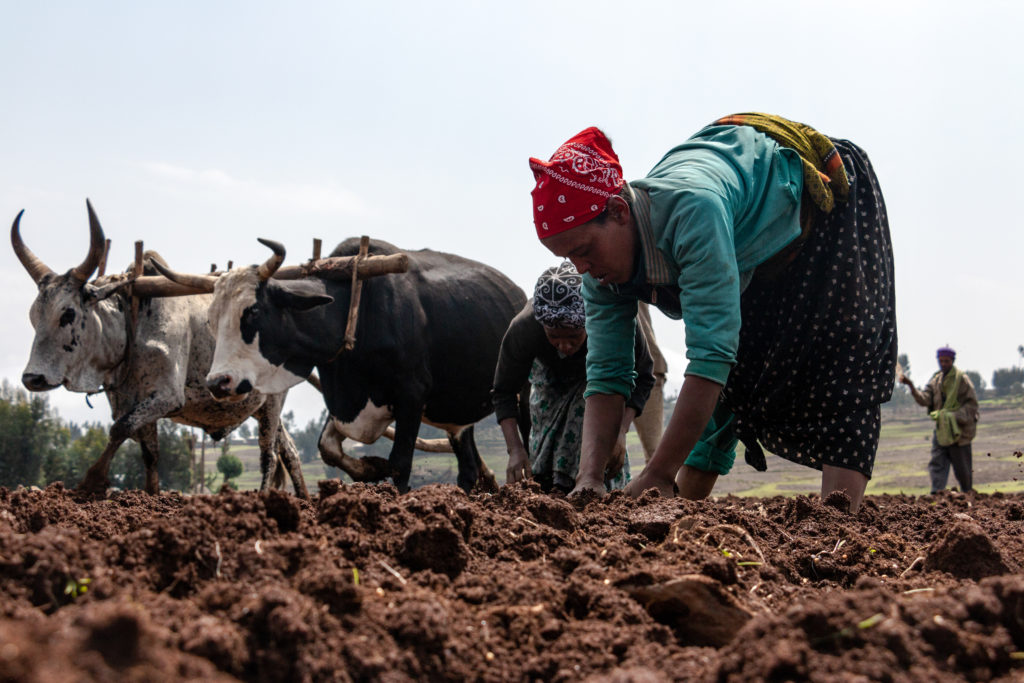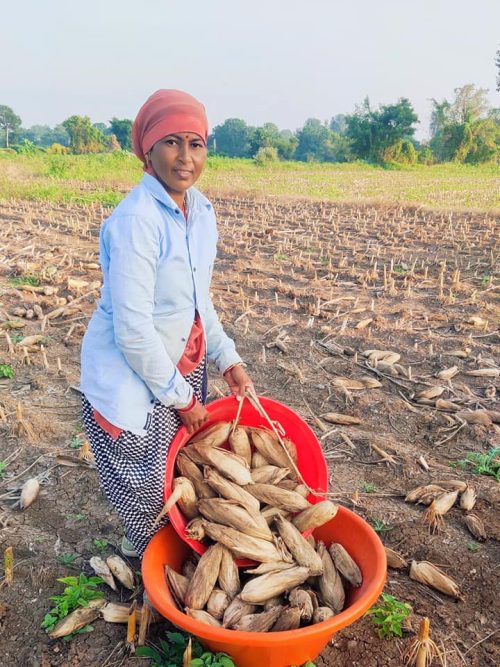In India, winter brings more than a chill — it challenges the very soil that sustains our crops. From slowing down microbial activity to increasing soil compaction, the colder months reshape the land in ways that can significantly impact crop health and yield.
Maharashtra’s Savita Sunil Dakle, a seasoned farmer with over two decades of experience, has not only overcome these challenges on her own farm but also trained hundreds of women in organic farming techniques through online platforms and community initiatives. Her Facebook group, Women in Agriculture, has over seven lakh members.
According to her, understanding the relationship between temperature, soil type, and crop growth is key to maintaining soil fertility and keeping crop yield consistent. Here are Savita’s expert tips to help farmers protect and enhance their soil health through the winter’s unique demands.
1. Boost microbial activity with compost
During winter, microbial activity (the work carried out by tiny organisms in the soil) slows down due to the drop in temperature. This effect is particularly noticeable in colder states such as Punjab, Haryana, and Rajasthan, where temperatures can fall below 5°C. “In the winters, when we sow, it takes an extra couple of days for seeds to grow. In contrast, during monsoons, they sprout within 2-3 days,” says Savita.
With fewer organisms breaking down organic matter, the soil’s ability to recycle nutrients slows down, leading to a shortage of essential nutrients for crops. “To combat this, farmers can add compost or well-decomposed organic matter before winter sets in to support healthy microbial activity throughout the season,” Savita shares.
2. Prevent compaction with deep ploughing
When wet soil freezes, it can harden, making it difficult for water to soak in and for plant roots to grow properly. This is a common problem in clayey soils, especially in regions like Uttar Pradesh, Bihar, and West Bengal. It particularly affects crops like rice and sugarcane, as they require loose, well-aerated soil.

(Representational image)
To prevent soil compaction, farmers should avoid working the soil when it’s wet. Instead, using deep ploughing techniques before winter can loosen the soil. “It is crucial to open up and aerate the soil properly. This also helps warm it up in the process,” Savita says.
3. Use slow-release fertilisers
Cold weather can reduce the availability of essential nutrients like nitrogen, phosphorus, and potassium in the soil, particularly in black cotton soils (common in Maharashtra, Madhya Pradesh, Gujarat) and alluvial soils (common in Uttar Pradesh and Punjab). These soils may also become more acidic during the winter months, which can further hinder nutrient uptake by plants.
To tackle this, farmers can apply slow-release fertilisers or use organic amendments such as neem cake or bone meal to maintain steady nutrient supply for winter crops like chickpeas and mustard.
4. Protect from frost
In regions like Rajasthan, Himachal Pradesh, and the Kashmir Valley, where temperatures can dip below freezing, frost damage becomes a serious concern. Frost can cause the soil to freeze, damaging its structure and affecting root growth, particularly for crops like spinach, cauliflower, and cabbage.

Farmers can protect crops by using mulching techniques, which help warm the soil, and by covering plants with frost blankets or plastic sheets to reduce frost exposure.
5. Retain moisture with mulching
In regions like Rajasthan, Madhya Pradesh, and parts of Gujarat, winter often brings drier conditions, which can lead to reduced soil moisture. While cool weather reduces evaporation, a lack of rainfall can still dry out soils, making it harder for crops to access water.
“While black or clayey soil has the potential to retain moisture, softer soils don’t, so farmers should understand their soil type and plan accordingly,” explains Savita. Farmers can use mulches to help retain moisture and apply water conservation techniques like drip irrigation or rainwater harvesting to ensure adequate soil moisture.
6. Manage soil pH
Cold temperatures and winter rains can increase soil acidity in high-rainfall areas like the Western Ghats (in Kerala and Karnataka) and the Northeast (in Assam). Increased acidity can affect nutrient retention, making it more challenging to grow crops like rice, soybean, and cotton.
To neutralise acidity, farmers should test soil pH regularly and apply lime or dolomite to restore a more neutral environment suitable for a range of crops.
7. Control erosion with terracing
Heavy rains in winter, particularly in hilly regions like the Himalayas, Sikkim, and parts of Uttarakhand, can lead to increased soil erosion, washing away valuable topsoil. This can negatively affect crops such as tea, coffee, and rice, which are often grown on slopes.
To prevent soil erosion, farmers should adopt practices like terracing, contour farming, and planting cover crops such as barley or gram, which can help stabilise soil and protect it from water runoff.

Speaking from experience, Savita shares, “We create a kind of bandh (barrier) to prevent topsoil from washing away during heavy rains. This barrier directs the soil into a long, narrow pit, allowing us to collect and preserve it rather than losing it to runoff.”
8. Rotate crops for soil health
Winter temperatures affect when and which crops can be planted in different regions. Savita advises farmers to follow proper crop rotation practices. “We should keep changing the crops grown on any plot of land to avoid yield loss and prevent pests from damaging the crops or soil,” she explains. For instance, planting legumes like chickpeas or lentils after wheat can improve soil nitrogen levels and break pest cycles.
To follow Savita, click here.
Edited by Khushi Arora
